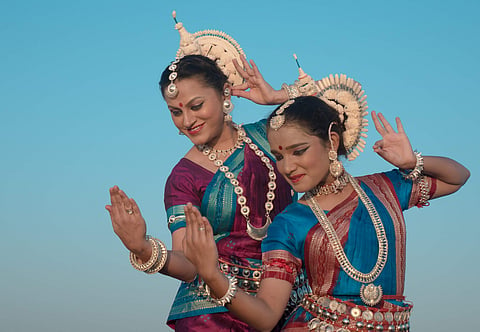

When the time comes, it is tradition that the guru passes on the mantle to the shishya. The guru here is Deepak Roy, the Odissi exponent; the shishya is Aishwarya Hegde, and the mantle that is being passed on is Deepam — Odissi Academy Muscat. And while Hegde, who recently released a video along with fellow dancer, Tamoghna Dey, of the duo dishing out Odissi moves to an acapella song by the famous Saudi artist, Alaa Wardi, is the quintessential new-age student-turned-teacher, Guru Roy is not. Instead of hanging up his boots, well...ghungroos in his case, he will carry forward the legacy of Deepam, which he started in 1994, by opening a branch in Kolkata. While Hegde takes over the reigns independently from this month, thus carrying forward her Guru Roy's legacy, her guru will do his bit to further the cause of his guru, Padma Vibhushan Kelucharan Mohapatra of spreading the art of Odissi far and wide.
Binge watch
Coming back to the viral video that Hegde, who has been teaching juniors and beginner classes for adults at Deepam, released, 'Oman through the eyes of Odissi' opens with Hegde and Dey dressed in their fine silver jewellery (like the Pushpachuda, the crown worn by Odissi dancers) that is particular to this dance form. They then proceed to dance at the various locales of Oman including Mutrah Fort, Azaiba Beach and other scenic places where the video was shot for over two weeks. "The idea was to reach out to as many people as possible in the purest form of the dance, as all the steps that we performed were absolutely pure Odissi," says Hegde, who became a mother to a daughter a little over a year ago.
And luckily, her guru too is supportive of this and other kinds of experimentation, as long as they stick to the grammar and rules, of course. Both the guru and shishya collectively realise that gone is the time when a dance form used to be limited to stage performances and classrooms; we are after all in a world of open source knowledge in which space sharing and collaborating is the only way to grow, she asserts. This is exactly why the students of Deepam have conducted workshops and even online tutorials everywhere, from Kochi to Australia. And in an era where international dance forms are slowly gaining popularity in the country, the dancer believes that there is no need to worry about the survival of his classical dance form, as "it has survived before us and it will survive well after us."
Classic charm
Like yoga, turmeric and several other things that India has new-found pride in after the West validated it, classical dance too has become one of those things, fears Hegde. But it is a gift in many ways, she believes, because it helps children fighting with issues of body image gain a positive outlook. "I have seen girls completely transform on stage while performing," says Hegde, who also believes that Odissi taps into the innate grace of anyone who decides to pursue it. But does that keep the men away? Hegde disagrees and gives us examples of the two body postures central to Odissi — the Chauka and the Tribhangi. While the Tribhangi is the three-body-bend stance that is feminine to look at, the Chauka is the square stance, whose visual strikes a masculine tone. "So, Odissi is a mixture of both in proportions, the feminine and the masculine," she infers, though she agrees that turning classical dance into a profession is still a stigma, more so for the men.
Same but different
But while Hegde made it clear that Odissi will survive against international dance forms, what about when it is pitted against the other classical dance forms of India like Bharatanatyam and Kathak? "It is like my guru once said, 'No matter what you serve payasam in, be it an earthen pot, a ceramic bowl or a steel glass, it will be judged only on the basis of its taste'. So, no matter which Indian classical dance form, where we all in some way or the other follow the Natya Shastra, if it touches the heart, that is enough," she says, re-emphasising the purpose of Deepam.
Check them out at facebook.com/deepamodissi/
